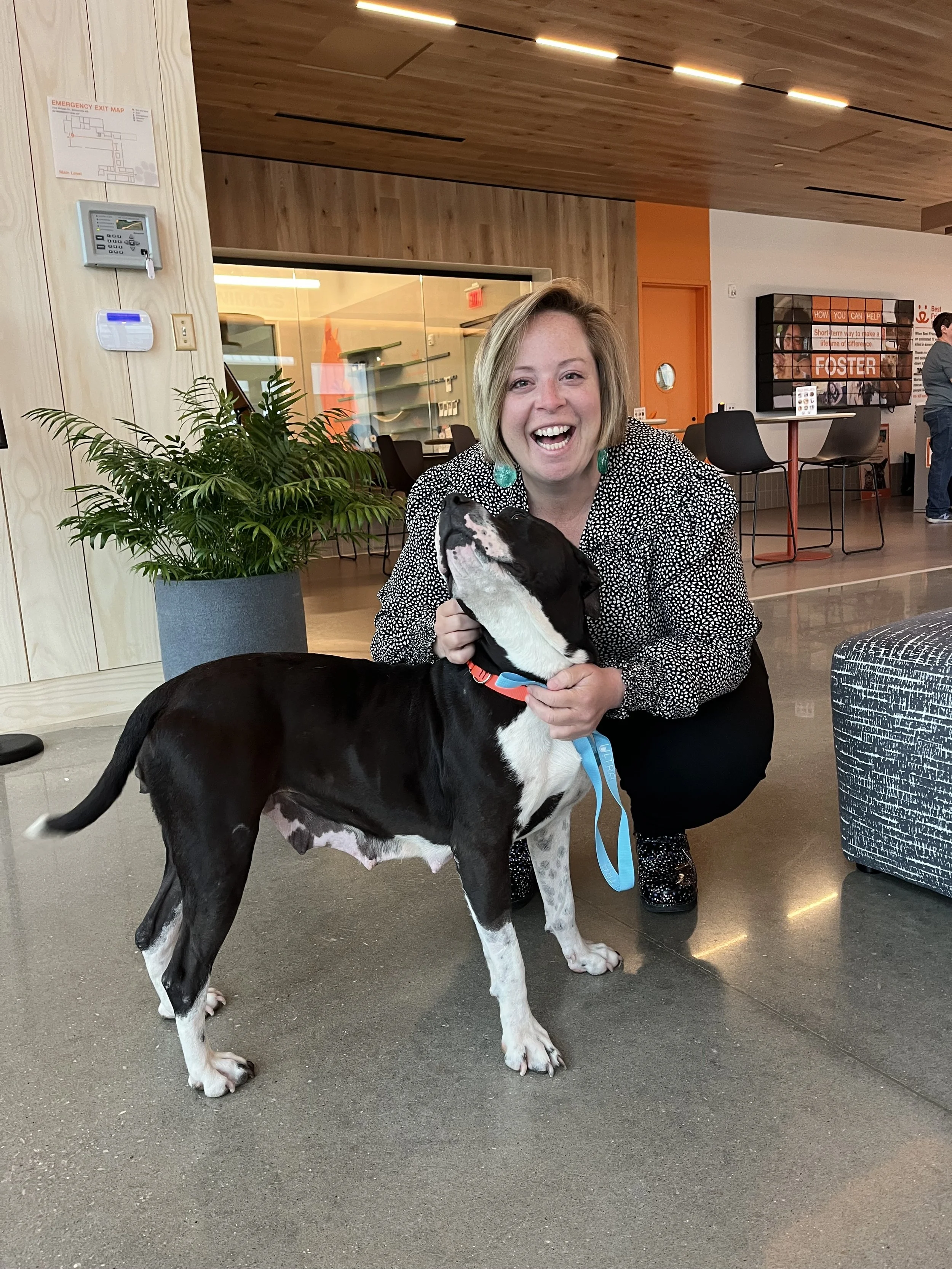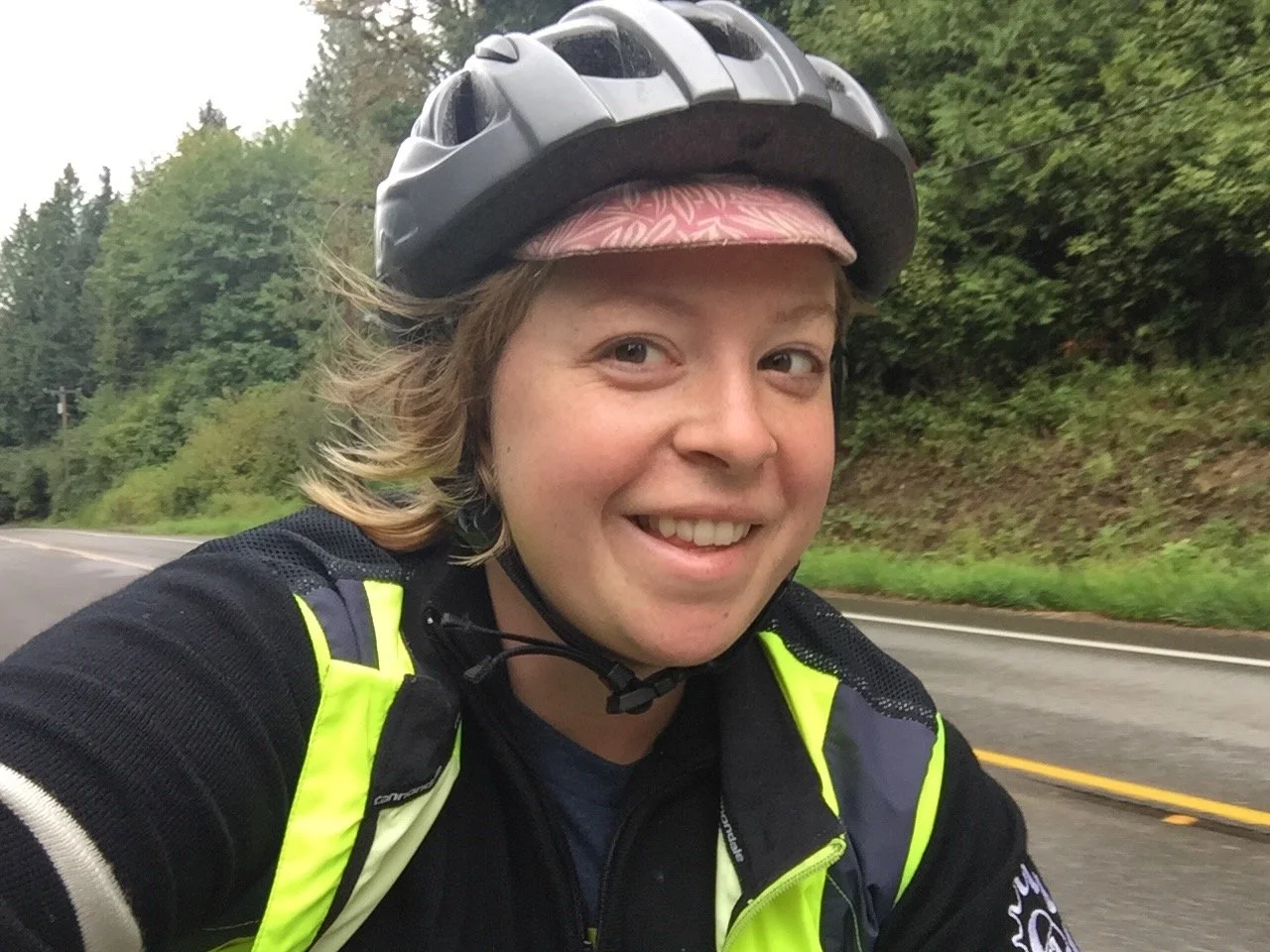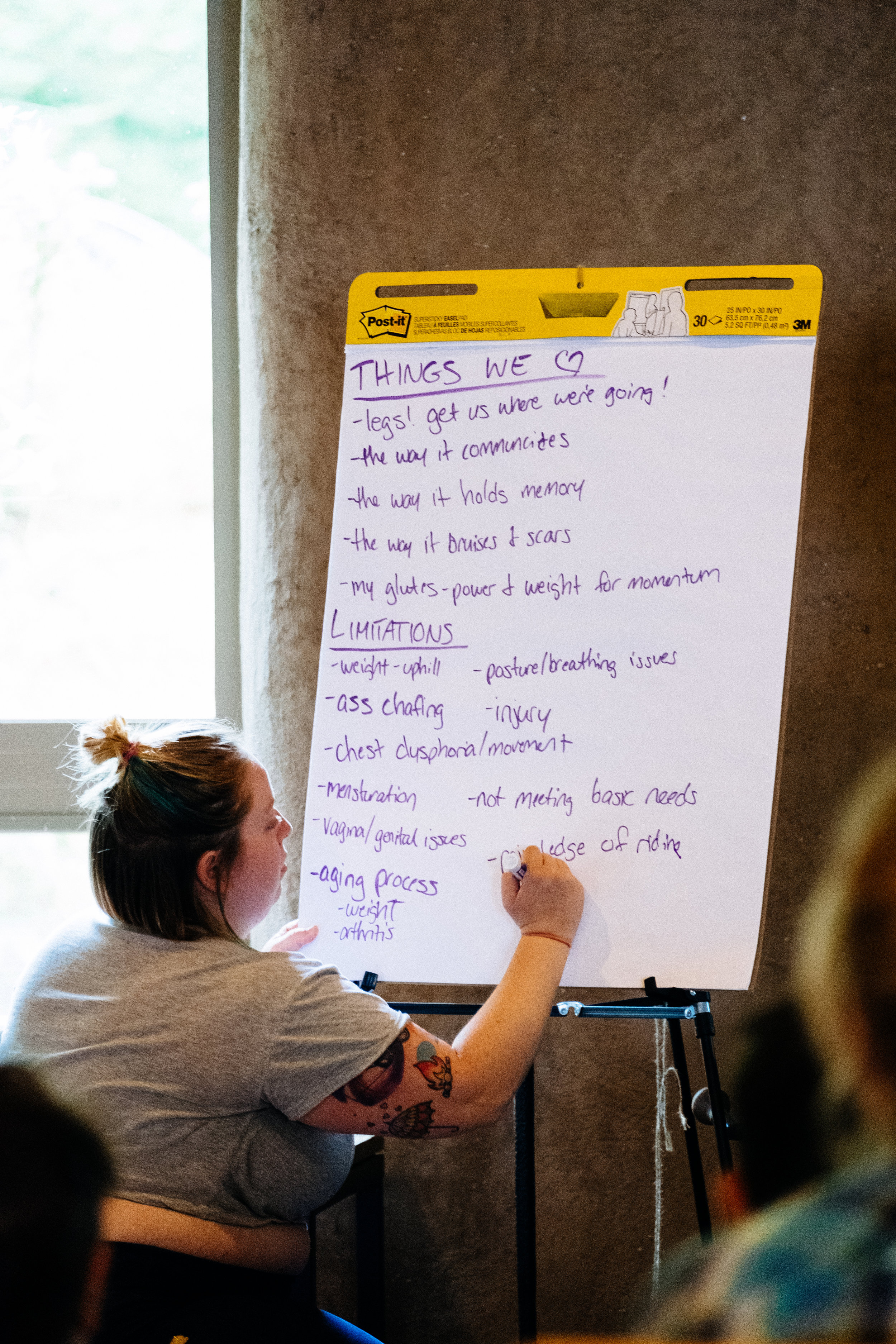***Extra Special Guest Blog Post***
This week’s post is co-written by myself (Marley) and Kailey Kornhauser, a super-rad fellow fat biker from Oregon. We met on Instagram and presented a session together at the WTF Bikexplorers Summit on Fat Bikers. Hope you enjoy!
This past weekend was the 2nd annual WTF Bikexplorer Summit in Vernonia, Oregon. We were lucky enough to have our session on Fat Bikers and body size inclusivity in cycling accepted and we presented to a packed house of over 40 people of all shapes and sizes! We covered a lot of ground during our hour long discussion but promised our session attendees that we’d post a list of additional resources on Marley’s blog afterwards.
So for the benefit of those who weren’t able to attend the summit and for those who want to relive the glory that was (including coordinating crop tops), we’ve compiled an overview of our session, including our session outline, handouts, and additional resources. Feel free to scroll down to the Resources section for some great reading lists, Instagrammers to follow, and suggested brands to support.
So much good stuff and so little time- we definitely could’ve talked about this all weekend.
(For real, we will come talk with any bike or outdoor brands who want to discuss this topic more in depth. The average size of a “woman” in the US is now between a 16 and 18, and men average close to 200lbs. Lots of folks who ride bikes also don’t necessarily fall into the rigid gender binary, so how about some non-gender specific gear while we’re at it? Current products and gear don’t work for this HUGE audience and we’d love to help make it better, more functional, safer, and better looking. Get at your girls. Email Marley here, and Kailey here..)
Session Outline
Introductions
Land Acknowledgement
Ground Rules
Written Exercise & Discussion
The Nitty-Gritty: Gear, Equipment & Clothing
Resource List
Introductions
Kailey Kornhauser likes to ride her bike slowly across long distances. When she isn’t riding her bike to the cinnamon roll shop or grinding some local gravel, Kailey is a forestry PhD student at Oregon State University. Kailey used to think that if she biked a lot she would lose weight. Then Kailey rode her bike a lot and didn’t lose any weight. Finally, she realized that she loved her body, and it turns out you don’t have to be thin to ride bikes.
Marley Blonsky also likes to ride her bike slowly, but across shorter distances than Kailey. She can often be found bike camping, eating ice cream or playing in the garden. Marley is a sustainability manager for a large logistics company where she helps companies manage their carbon footprints from shipping. Marley rides her bike in Seattle for transportation, fun, and because the bus and car are slow and frustrating. She is an active transportation activist who wants to see safe, equitable access for all people, regardless of gender, income, race, age, or body size.
Land Acknowledgment: The WTF Bike Summit was held in Vernonia, Oregon, which is on the traditional lands of the Chinook and Clatskanie People. As white people, we felt it was important to take a few minutes at the beginning of our session to recognize that the land we were on was stolen from the indigenous people who lived there previously and the history of colonialism. To learn more about land acknowledgments and whose land you are on, please visit https://native-land.ca/
Session ground rules
Our session started with a community agreement to follow a few ground rules
Fat is not a bad word.
No Diet Talk.
No body shaming.
Beware of coded language.
Celebrate your body for what it can do, not what it can’t.
We took turns going over each of these rules, explaining their importance and getting agreement from the group. We also asked the group if there were any additional agreements they would like to be added before we proceeded, and from there, we were off to the fun part of the talk!
We also had a quick vocab lesson about the fat spectrum and privilege. Both of us identify as “small fats.” This terminology comes from the Fat Lip podcast where they’ve got a helpful primer on the fat spectrum.
We both range in size from an 18-22 (XL-2X) depending on brand and garment so for the most part, can walk into stores and find clothes that fit. This includes some athletic wear, but not usually cycling specific wear. We did want to call attention to our privilege in this area, as there are SuperFat people and InfiniFat people who cannot walk into any store, let alone REI, Target, or order clothing online and have it fit, even from the plus size department.
Reflection/Discussion Questions
Kailey then led a reflective writing and discussion session that asked session participants to think critically the following questions:
What do you love about your body?
When do you feel limited by your body?
How can you be an ally to people of all sizes as a leader in the WTF bike community?
Riding a bike is a physical activity - there is no getting around that and there are some very real limitations for people in a larger body, or who have disabilities/chronic illnesses, etc. How can we create spaces that are welcoming and accessible to all that allow anyone who wants to to enjoy the fun/freedom/power experience of riding a bicycle?
Talking candidly about these tough topics felt so powerful, healing, and honest. We unfortunately only had an hour for the entire session and had some other topics (like gear and clothing) to get to but discussions definitely continued the rest of the weekend.
Candid conversations about our bodies on bikes
Gear & Resource List
General gear & Personalize Recommendations
Before preparing for our WTF session, we had not thought extensively about weight limits, partially because we are small fat people, but also because the industry doesn’t talk about these limits.
It can be challenging to find many of the structural weight limits on bicycle company websites. This article by Peggy Hughes explains how to determine your own weight, gear weight, total weight, and the structural weight limit a bike can support. Hughes also talks about bike wheel weight limits in depth. She explains that while structural weight limit of the bicycle itself is important, wheels often have an even more restrictive weight limit. Bikers in larger bodies may want to consider wheels with strong rims and a higher amount of spokes. Other things to take into consideration are bike frame material (steel vs carbon vs aluminum), component material (including the seat post), and options to switch out the stock components for comfort.
Additionally, Specialized provides an example of what to look for when searching bike manufacturer pages for structural weight limits. Many structural weight limits (rider plus cargo) are somewhere between 240-300 pounds. Take a look here for a good overview of structural weight limits for many brands.
Another factor to consider is the rate at which a fat cyclist will go through components. For instance, cyclists in larger bodies may wear out brake pads or pedals at a faster rate. Besides costing more, this does not pose much of a problem, but who wants to pay more when it feels like being fat already costs more?! However, fat cyclists may want to consider keeping extra components on hand to save themselves a trip to a bike shop.
Kailey leads discussion at the Summit
Our Specific Gear
Kailey 5’2 Size 1XL-3XL tops, XXL or 18-20 bottoms
Bibs:
Pearl iZumi Women’s Pursuit Attack Bib up to size XXL (I like it because the straps clip in between your boobs, the length of the leg is nice and doesn’t run up, the chamois is thick)
De Marchi Women’s Leggero Bib Short up to XXL (They are shorter than the Pearl iZumi and I do get a thigh muffin-top from them but it isn’t uncomfortable, they have a thinner chamois and have continued to be a go to for longer tours)
Terry Breakaway Shorts up to XXL (I stayed away from shorts for my first few years of riding because I thought they would cut into my stomach or always be falling down but they actually are the comfiest bike bottoms I have, medium thickness chamois, pretty short compared to my bibs but again it feels comfortable)
Jerseys:
I mostly wear T-shirts when I ride, simply because it is a preference. I have found some XXL jerseys (Pearl iZumi), they usually ride up for me and I don’t use the pockets anyways
Sports Bra:
Everyone is different but for me the Lane Bryant Wicking High Impact Molded Underwire Sports Bra was a game changer.
Bikes:
Specialized Diverge (structural weight limit is 240, I may well be over that limit but have not had issues after about 2,000 miles of riding)
Surly Troll (no weight limit) says f f f fatties fit fine on the fork, indicating that the bike can fit fat tires but I like to think it’s talking about me
Saddle:
I am very fortunate in that I have liked the saddles that have come on both of these bikes. I especially like the Women’s Myth Expert by Specialized
Bikepacking gear:
I’m unable to fit my underwire sports bra in any of my revelate bags so I strap it to the outside of the handlebar roll bag and it works great!
Marley 5’2 Size 1XL-3XL tops, XXL or 18-20 bottoms (we’re basically the same person)
Bottoms: This totally depends on the season and purpose for biking for me. When commuting or going shorter distances in the winter, I’ll wear cotton leggings or fleece tights(because they don’t make plus size wool leggings), or jeggings. In the summer, I’ll wear a dress most days.
When I’m bike touring, I have a pair of Novara XXL leggings I love that are sadly no longer being made, but I will wear them until they are threadbare. I also have a pair of Terry 2X shorts that are alright. The pickings are slim and I’ve basically decided I won’t be cute on bike tour.
Tops: I don’t wear bike jerseys. They weren’t made for people with large breasts and curves. Instead I wear normal tops or dresses. I’ve recently been wearing a lot of Columbia base layers on tour because they layer well and protect from the sun.
Bikes: I ride a 42cm 650b Surly Straggler with a Brooks B17 saddle. It’s strong and has been my go-to bike for nearly every adventure for almost five years. I recently bought a Marin Pine Mountain 1 for mountain biking which is a fun bike, but it’s a bit too large for me.
Bikepacking/camping gear: I’ve found that as a fat woman, my clothes take up more space than my smaller friends. I’ve tried using the Ortlieb frame bags/butt rocket system but found that I like using the old school pannier system better. For a sleep system, I use the REI Joule bag, which is a tight fit around my hips, but it works for now. If I was a size or two bigger, this sleeping bag would not work for me.
Brands we Love & Support*
SheBeest - up to 3xl
SuperFit Hero - up to 5XL
RSport (triathalon specific, but has padded chamois for cycling)- Up to 6X
Eddie Bauer - Up to 3X
REI - Up to 3X (not necessarily in cycling/performance gear)
SportivePlus - up to 5X (Canadian brand)
Prana - Up to 3x (we’re both wearing their stuff in the first photo!)
*We’re not making any money off of these brands…no affiliate links. But if any brands (ESPECIALLY BIKE brands want some fat people to test gear, we’re here for it!)
Fat Outdoor Resources
Jenny Bruso, Unlikely Hikers
AMAZING clothing list that isn’t bike specific
A really great article by Bruso
Introduction article by NYT explaining the group
Summer & Ginamarie, Fat Girls Hiking
Fat Activism Resources
YrFatFriend (anonymous essayist)
Some fat history: 1967 first “fat-in” in Central Park, over 500 in attendance, protesting and burning diet books, 1969 National ASsociation to Advace Fat Acecptance was founded and still exists today, 1972 The Fat Underground formed by radical fat lesibians
Facebook Groups: Fat Girls Traveling, Fat Girls Hiking, Big Girls Climb Too
Coordinating Crop tops!

























